
Let’s Talk!
We’re here to help you with any questions you may have. Please don’t hesitate to reach out to us.
Platelet rich plasma therapy (abbreviated as PRP) is a regenerative treatment for Plantar Fasciitis that consists on the injection of your own platelets to trigger the body’s natural repair and regeneration processes. PRP is effective in the treatment of several musculoskeletal conditions, including injury of tendons, ligaments, muscles and joints. PRP injections have been replacing traditional surgery for many orthopedic conditions ranging from soft tissue injuries (tendonitis, ligament injuries, muscle tears) to joint disorders, such as a meniscus tear or mild to moderate joint arthritis.
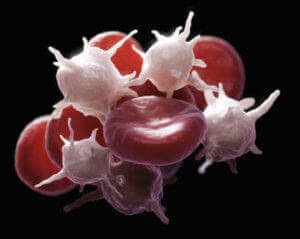
PRP therapy takes advantage of the fact that platelets have an important role in the process of wound and soft tissue healing, particularly when inflammation has developed. PRP therapy requires only a small amount of your own blood. This sample is centrifuged to obtain a fraction that has a high concentration of activated platelets—the platelet rich plasma fraction. The PRP is then injected into the injured tissue to promote its healing.
The administration of these activated platelets causes a local response that promotes healing and regeneration. This treatment exerts beneficial effects through several mechanisms. These include:
We perform this procedure using ultrasound imaging to guide the injection. Ultrasound guidance increases the accuracy of the PRP administration, which may decrease pain following the procedure. We also use light activation to increase the efficacy of our platelets, which may also reduce any discomfort you may feel after the procedure. In general, PRP therapy requires only one session, but depending on the clinical characteristics of your Plantar Fasciitis, additional injections may be needed.
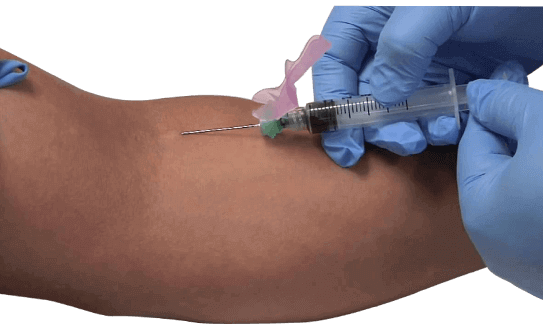
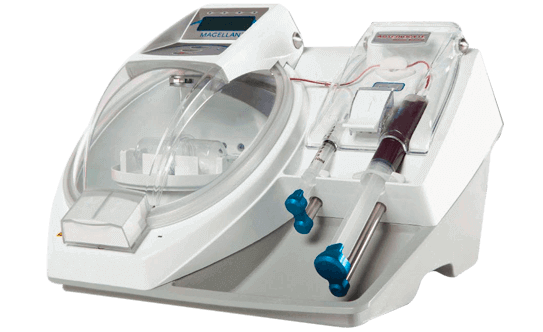
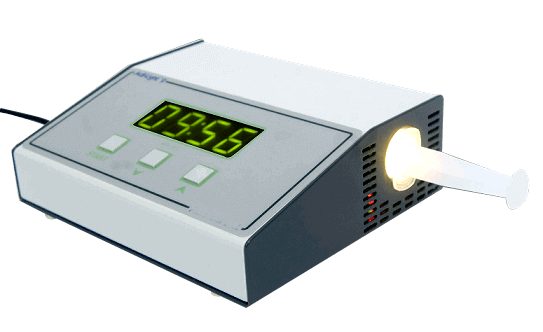
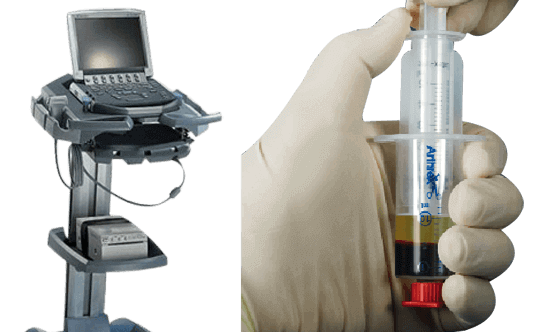
Platelet Rich Plasma injections can be very helpful in chronic Plantar Fasciitis pain. Your body’s natural growth factors can be very helpful in fighting some of the complications that can occur with chronic Plantar Fasciitis.
We use PRP injections in certain patients with chronic Plantar Fasciitis:
A PRP injection can be uncomfortable and cause post-procedural pain that lasts a few days. When used to treat Plantar Fasciitis, PRP injections scan be combined with other treatments such as Shock Wave Therapy.
The results of platelet rich plasma therapy can be further improved by:

Although the treatment is generally well-tolerated by individuals of all age groups, there are certain contraindications to PRP Injections. For example:
The aftercare for most PRP injections is relatively simple. Patients will resume activity at their own pace. The pain from the process typically will last a few days, occasionally longer, and some patients have more severe or sporadic pain than others. Because your own blood is used, there is no risk of a transmittable infection and a very low risk of allergic reaction to the treatment.
We recommend going to a clinician with experience in giving Platelet Rich Plasma injections. We activate PRP using light activation to increase their effectiveness and give Platelet Rich Plasma injections under ultrasound guidance to increase the accuracy of the procedure.
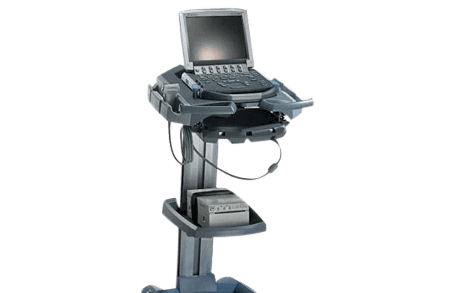
Most patients will experience some post-procedural pain at the injection site for up to 3 days and in some cases longer. This is typically managed with ice and over-the-counter pain relievers like Acetaminophen (Tylenol); however the physician may prescribe stronger pain relievers. Non-steroidal anti-inflammatory agents (NSAIDS) should be avoided since they interfere with the effectiveness of the PRP treatment.
Other side effects of PRP injections are very limited as the patient is utilizing their own blood, which they should have no reaction to. Sometimes the color around the skin of a PRP injection will appear bruised. Most of these side effects are temporary and resolve spontaneously within a couple of days after the initial procedure. Rare complications includes infection at the injection site and bleeding especially with anticoagulant therapy or bleeding disorders.
References:
For appointments and enquires:
Phone: (774) 421-9144
This information is for educational purposes only and is NOT intended to replace the care or advice given by your physician. Always seek the advice of your physician or other qualified health provider before starting any new treatment or with any questions you may have regarding a medical condition. For more information see our Medical Disclaimer.
– Privacy Policy – Terms of Use –
Copyright 2023 © The Center for Morton’s Neuroma. All Rights Reserved.


We’re here to help you with any questions you may have. Please don’t hesitate to reach out to us.
The Center for Morton's Neuroma
